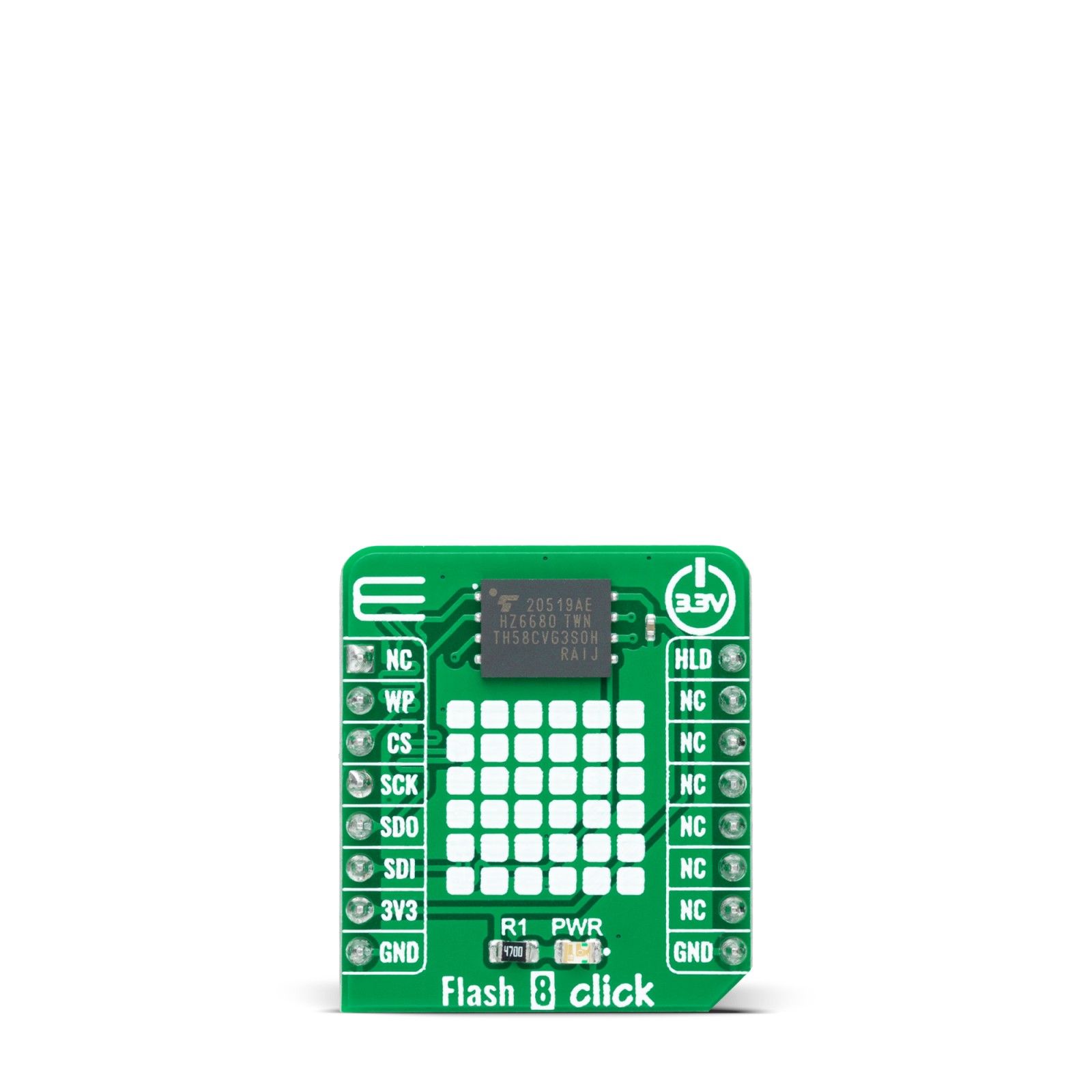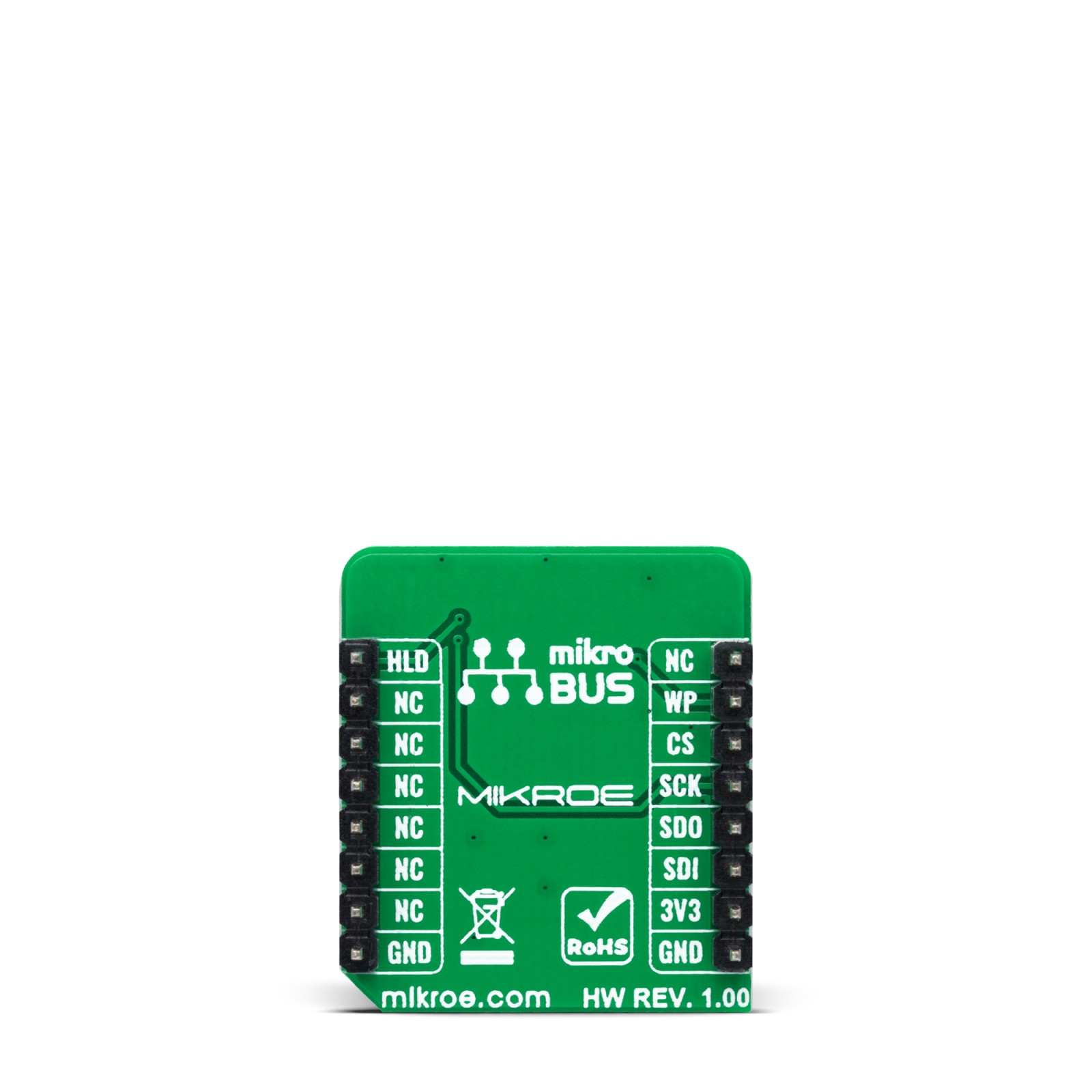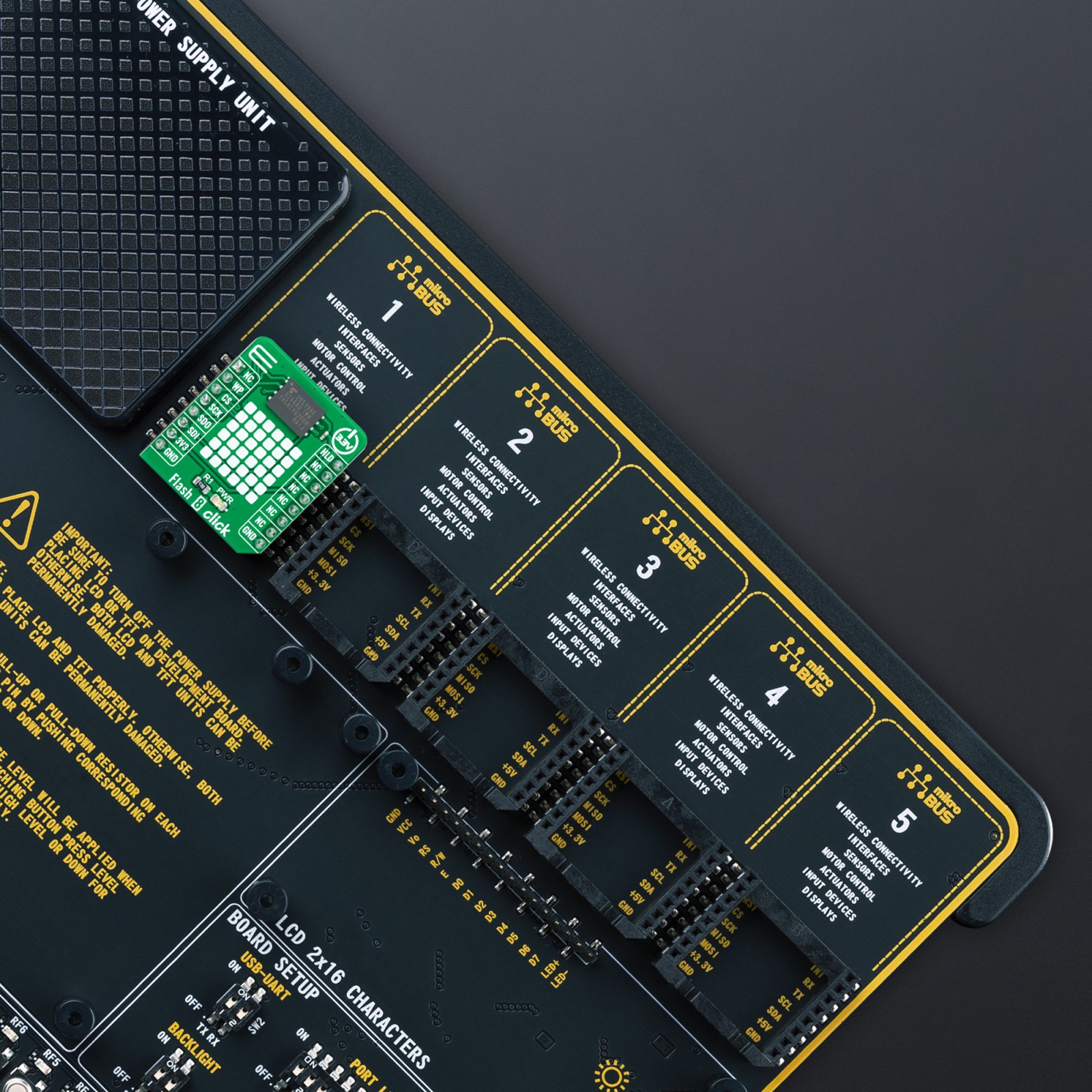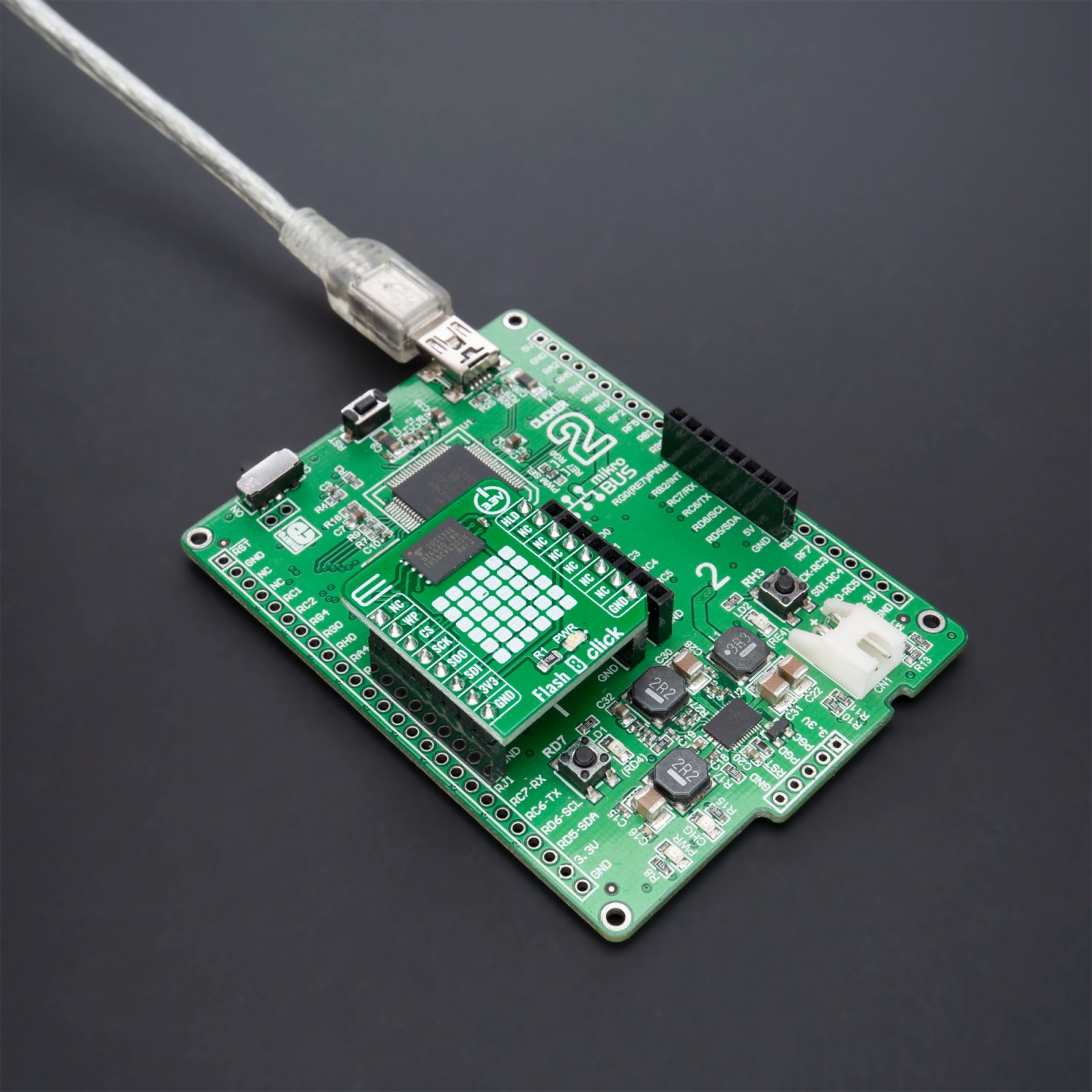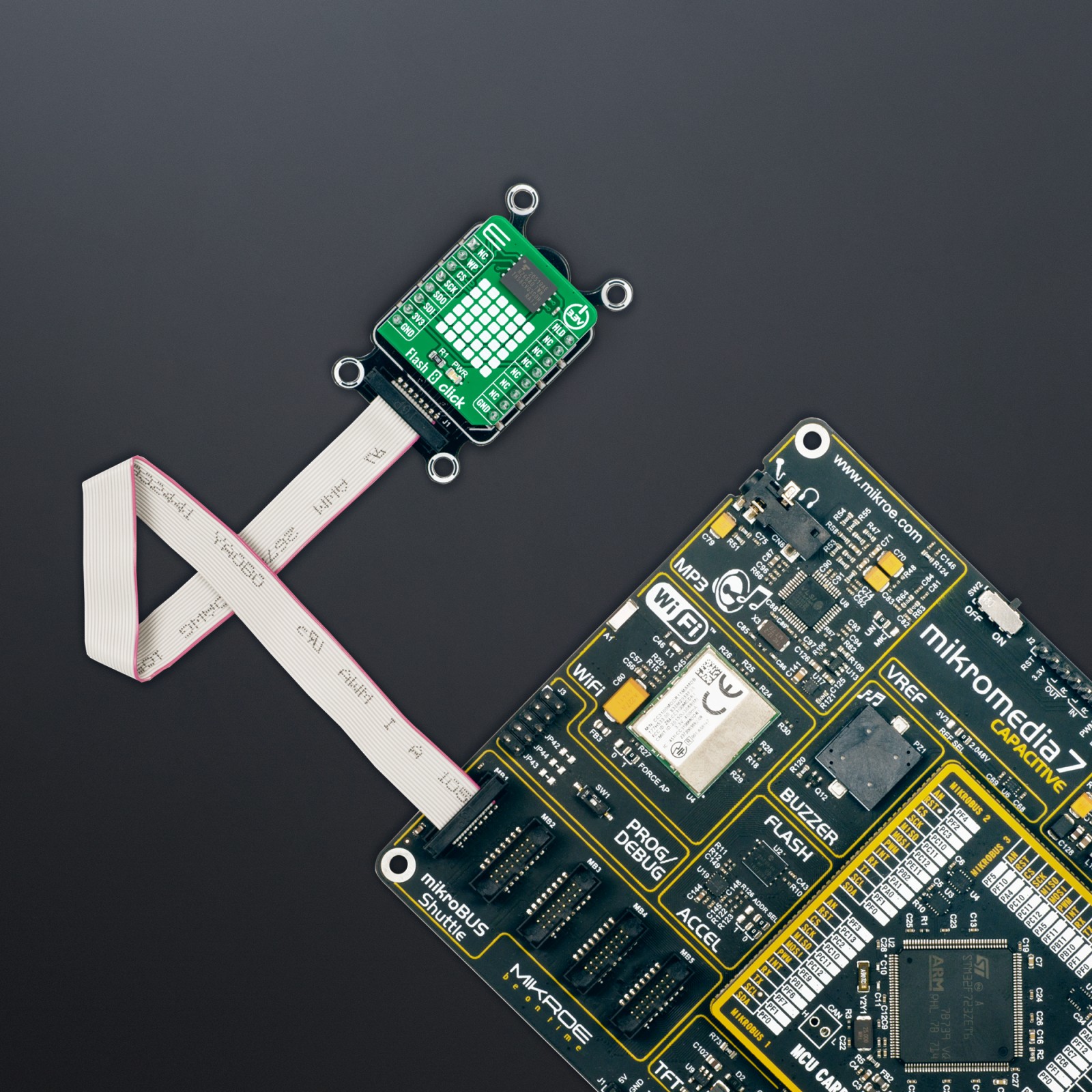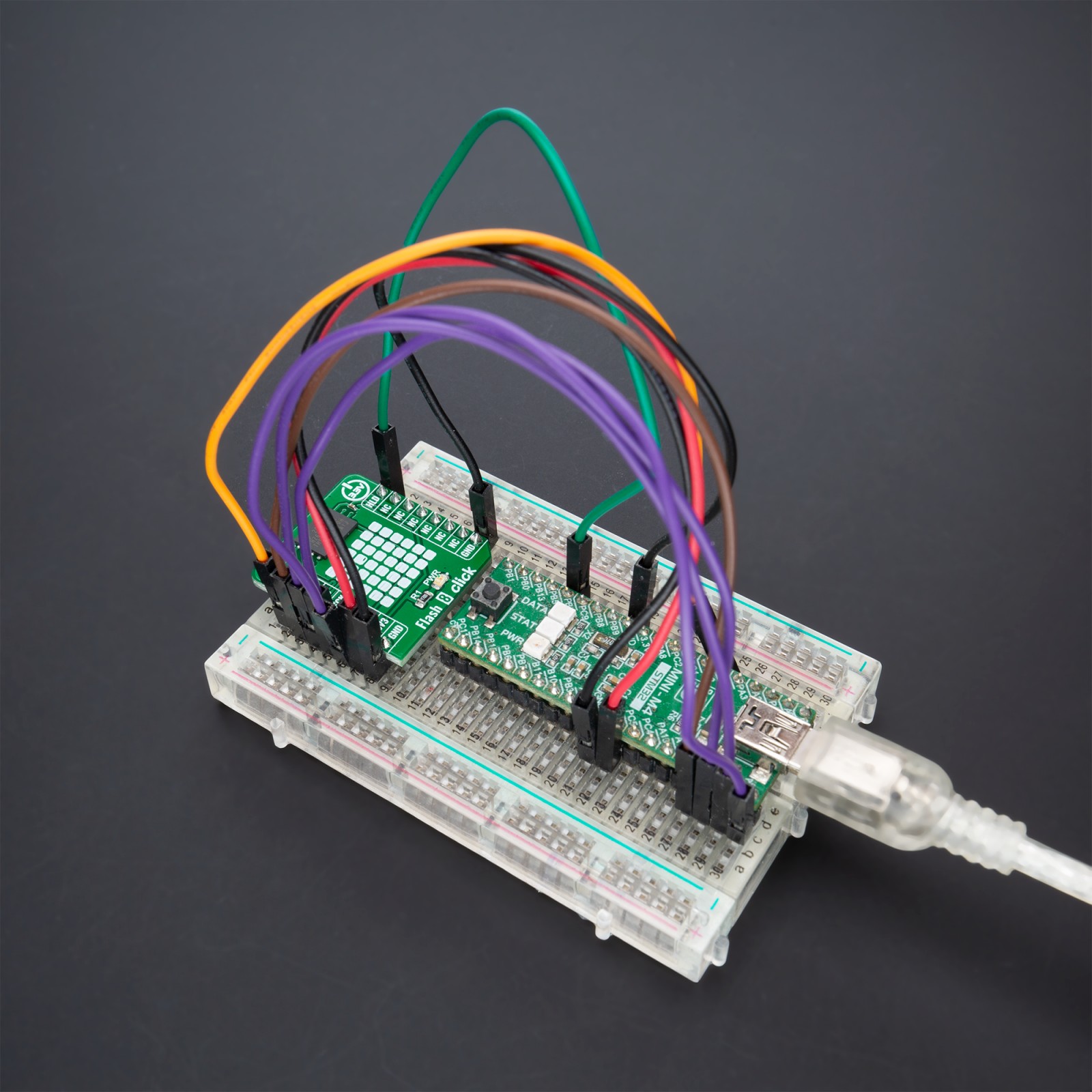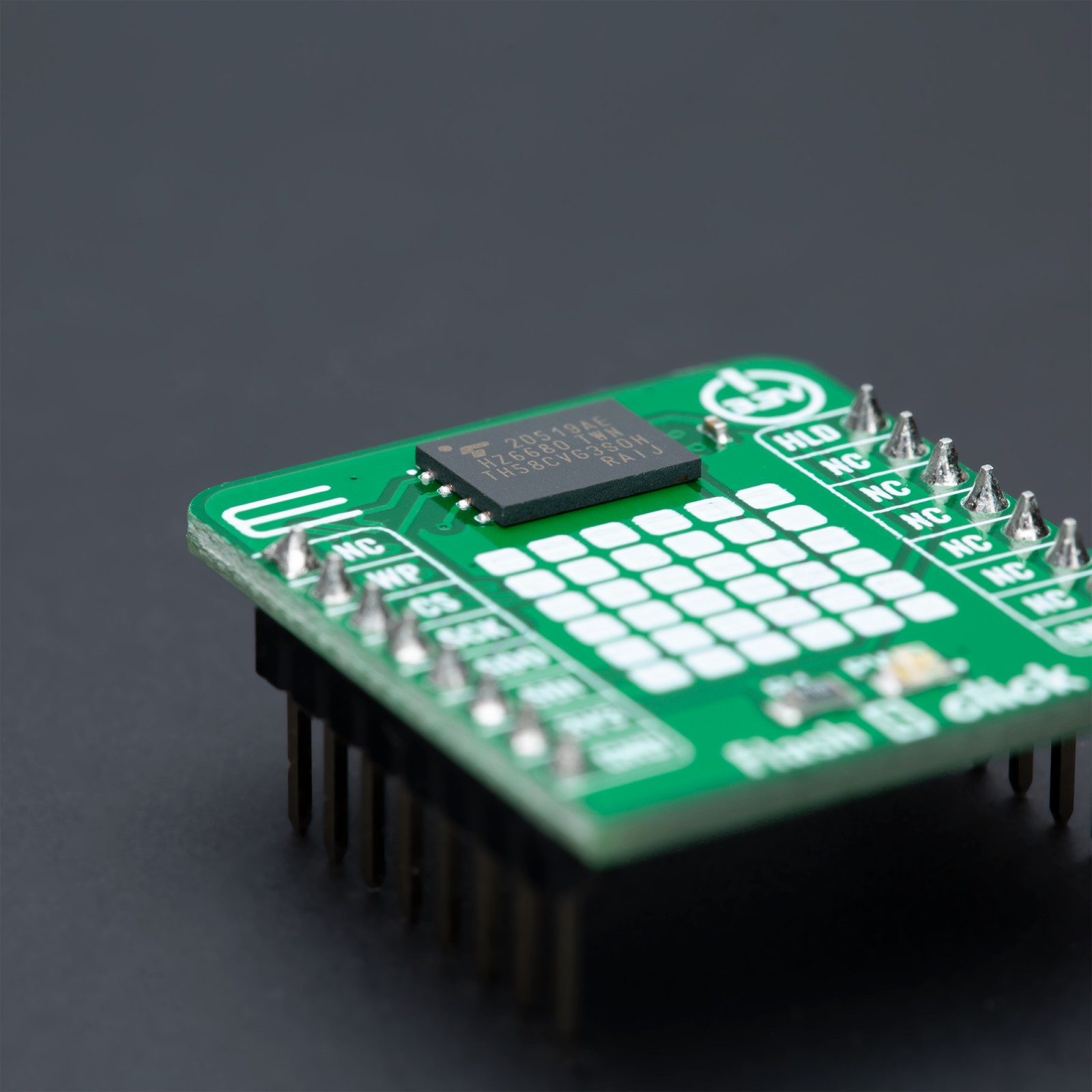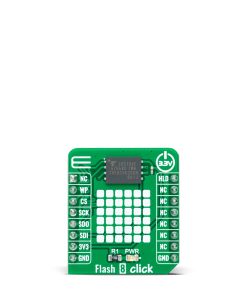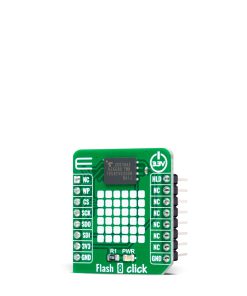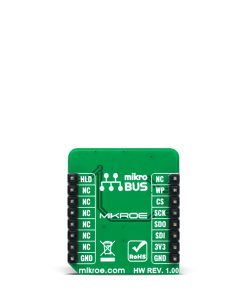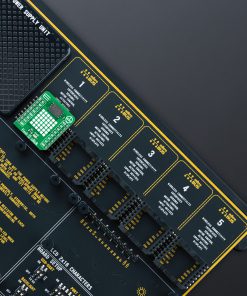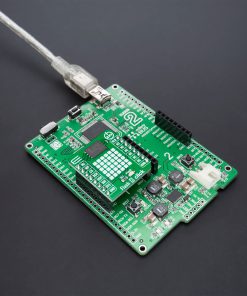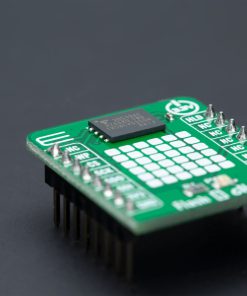Flash 8 Click
R370.00 ex. VAT
Flash 8 Click is a compact add-on board representing a highly reliable memory solution. This board features the GD5F2GQ5UEYIGR, a 2Gb high-density non-volatile memory storage solution for embedded systems from GigaDevice Semiconductor. It is based on an industry-standard NAND Flash memory core, representing an attractive alternative to SPI-NOR and standard parallel NAND Flash with advanced features. The GD5F2GQ5UEYIGR also has advanced security features (8K-Byte OTP region), software/hardware write protection, can withstand many write cycles (minimum 100k), and has a data retention period greater than ten years. This Click board™ is suitable for storage and data transfer in consumer devices, and industrial applications.
Flash 8 Click is supported by a mikroSDK compliant library, which includes functions that simplify software development. This Click board™ comes as a fully tested product, ready to be used on a system equipped with the mikroBUS™ socket.
Stock: Lead-time applicable.
| 5+ | R351.50 |
| 10+ | R333.00 |
| 15+ | R314.50 |
| 20+ | R302.66 |

